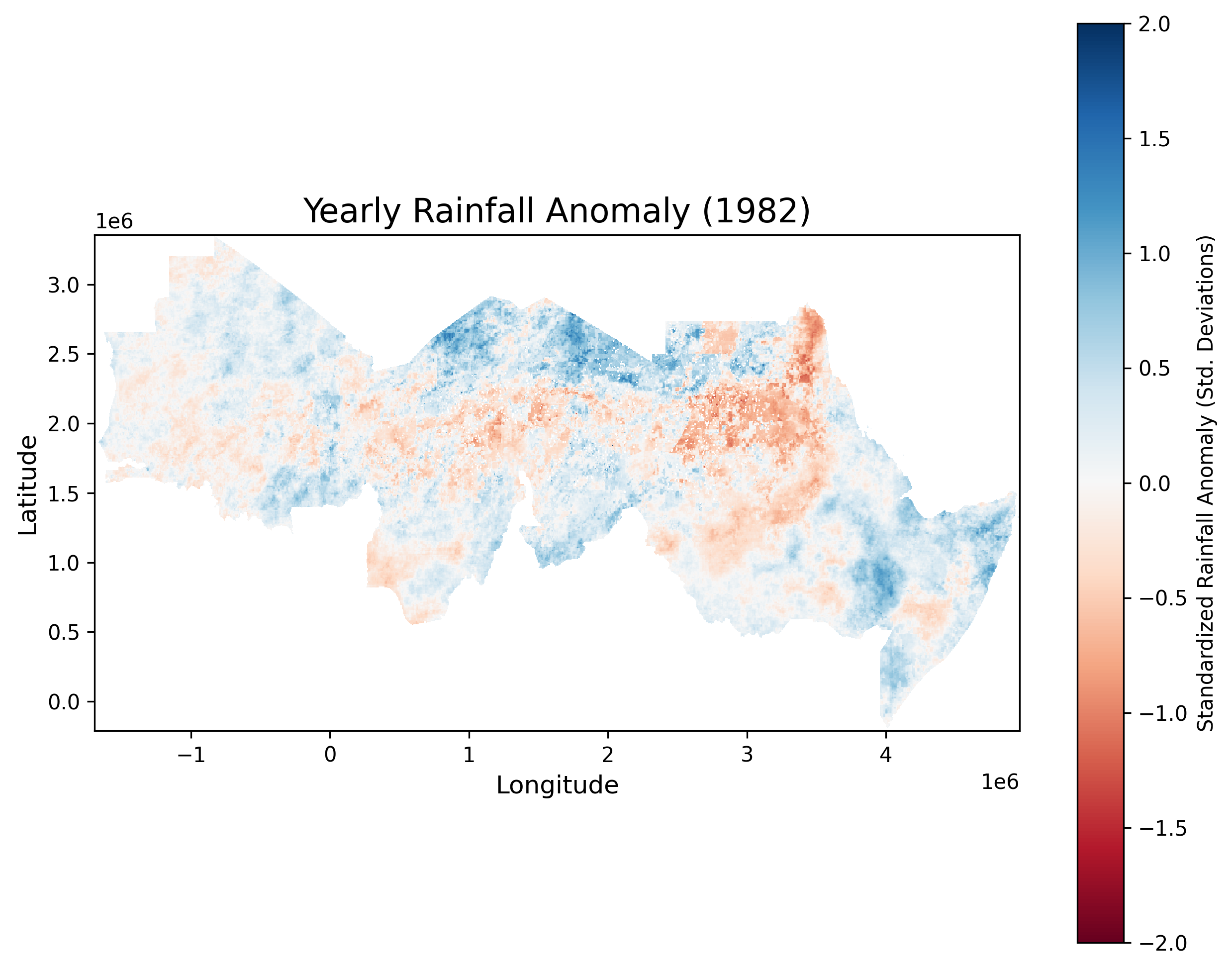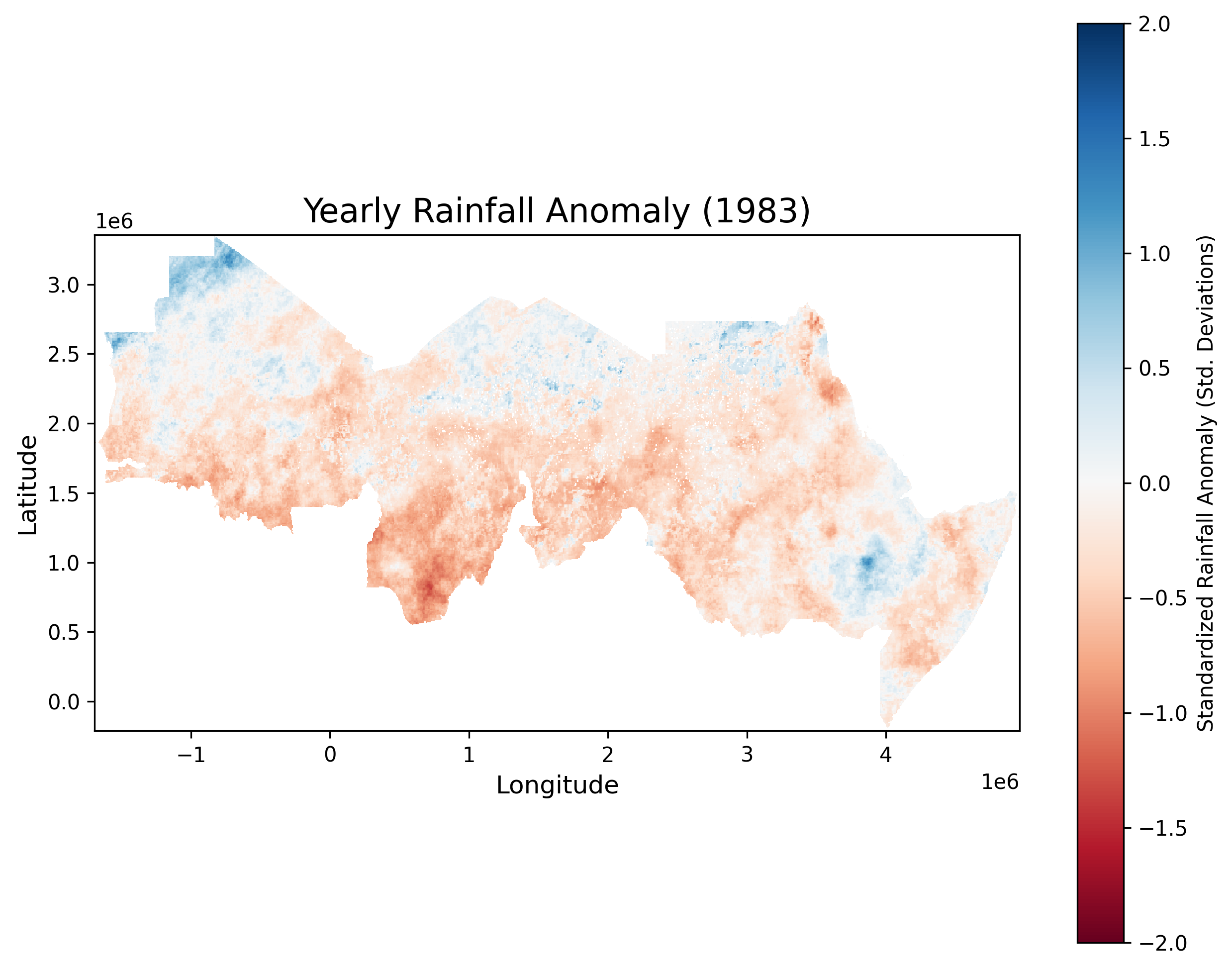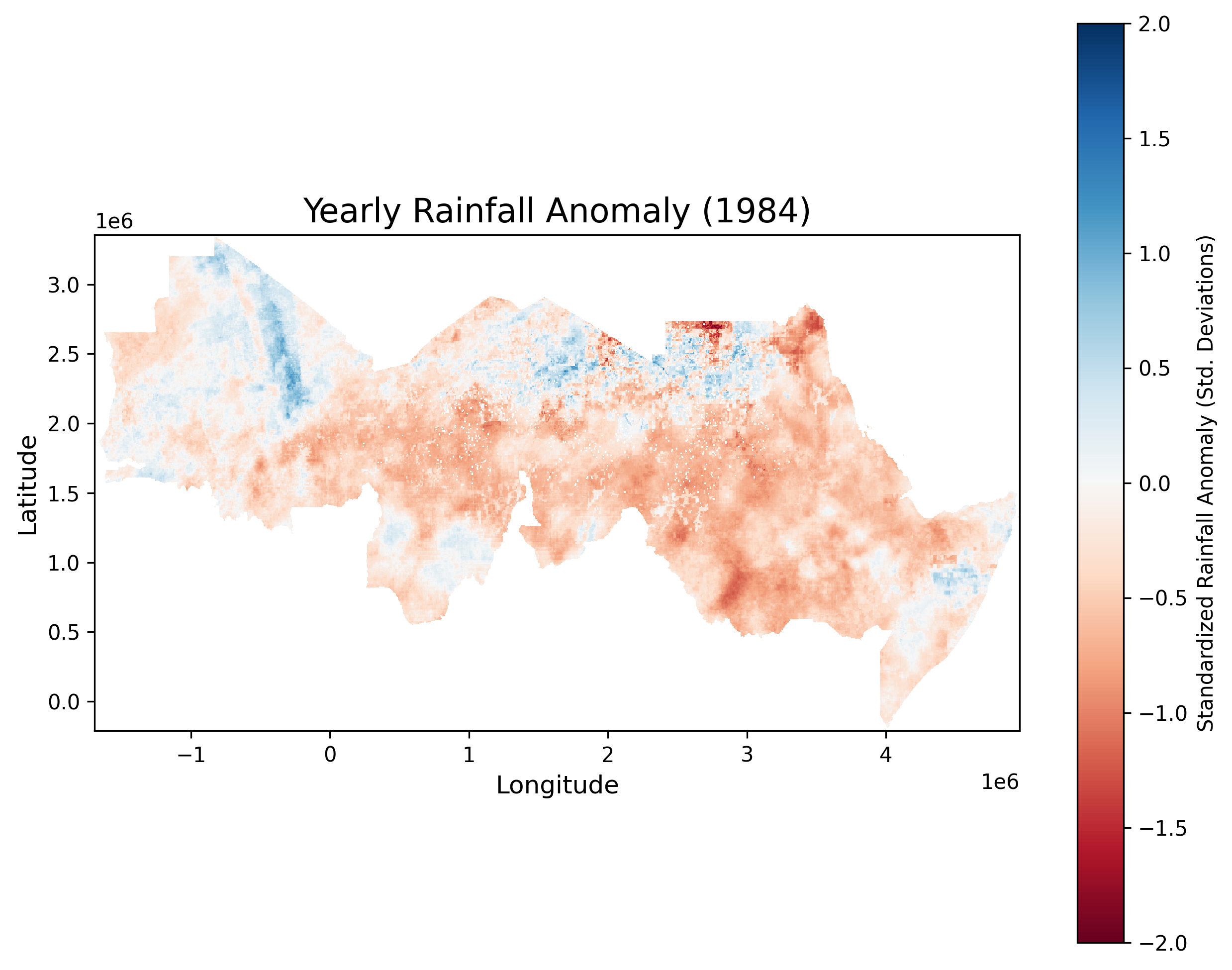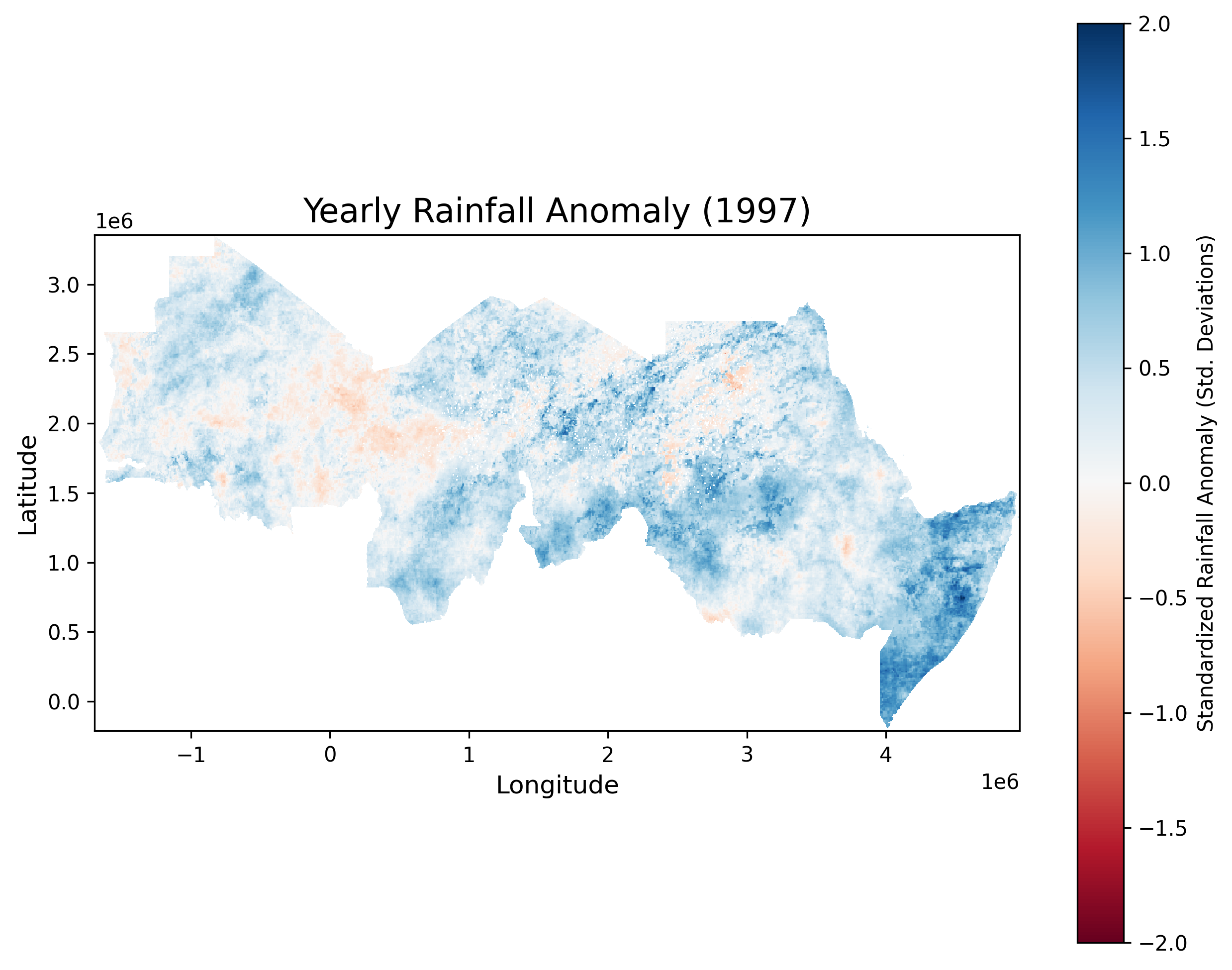Assessing State of Land
As part of K4GGWA, we will be compiling and presenting annual state of land reports, which provide summaries of important trends and events in the course of the year. The primary focus is on land cover, soil and land health, and weather and climate related events and trends. The objective of the monitoring we do as part of K4GGWA is to identify changes and trends that stem from land restoration interventions and climate change, and to provide information that can be used to inform decision-making and planning for the Great Green Wall Initiative.
When we design monitoring systems to assess and track changes in land cover and land health over time, it is important to account for the types of variations in weather and climate shown above. This is particularly important when we assess the impacts of land restoration interventions to ensure that we are detecting actual impact from interventions and not just natural variations or trends.



